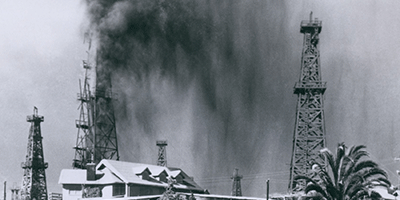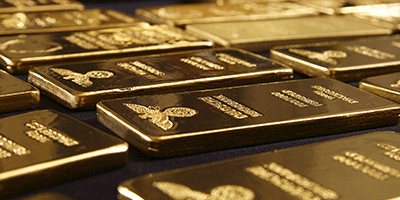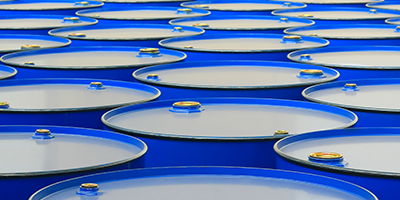%
Jubak’s Picks Performance 1997-2019
Jubak’s Picks
Buy and hold? Not really.
Short-term trading?
Not by a long shot.
So what is the stock-picking style of The Jubak’s Picks portfolio?
Click to expand...
Click to View the Jubak’s Picks Portfolio
I try to go with the market’s momentum when the trend is strong and the risk isn’t too high, and I go against the herd when the bulls have turned piggy and the bears have lost all perspective. What are the results of this moderately active — the holding period is 12 to 18 months — all-stock portfolio since inception in May 1997? A total return of 584% as of December 31, 2019. That compares to a total return on the S&P 500 stock index of 335% during the same period.
%
Top 50 Stocks Performance 2019
Top 50 Stocks
This long-term, buy-and-holdish portfolio was originally based on my 2008 book The Jubak Picks.
Trends that are strong enough, global enough, and long-lasting enough to surpass stock market averages.
Click to expand...
Click to view the Top 50 Stocks Portfolio
In The Jubak’s Picks Portfolio I identified ten trends that were strong enough, global enough, and long-lasting enough to give anyone who invested in them a good chance of beating the stock market averages.
To mark the publication of my new book on volatility, Juggling with Knives, and to bring the existing long-term picks portfolio into line with what I learned in writing that book and my best new ideas on how to invest for the long-term in a period of high volatility, I’m completely overhauling the existing Top 50 Picks portfolio.
You can buy Juggling with Knives at bit.ly/jugglingwithknives
%
Dividend Income Performance 2021
Dividend Income
Every income investor needs a healthy dose of dividend stocks.
Why bother?
Why not just concentrate on bonds or CDs?
Click to expand...
Click to view the Dividend Income Portfolio
Because all the different income-producing assets available to income investors have characteristics that make them suited to one market and not another. You need all of these types of assets if you’re going to generate maximum income with minimum risk as the market twists and turns.
For example: bonds are great when interest rates are falling. Buy early in that kind of market and you can just sit back and collect that initial high yield as well as the capital gains that are generated as the bonds appreciate in price with each drop in interest rates.
CDs, on the other hand, are a great way to lock in a yield with almost absolute safety when you’d like to avoid the risk of having to reinvest in an uncertain market or when interest rates are crashing.
Dividend stocks have one very special characteristic that sets them apart from bonds and CDs: companies raise dividends over time. Some companies raise them significantly from one quarter or year to the next. That makes a dividend-paying stock one of the best sources of income when interest rates start to rise.
Bonds will get killed in that environment because bond prices will fall so that yields on existing bonds keep pace with rising interest rates.
But because interest rates usually go up during periods when the economy is cooking, there’s a very good chance that the company you own will be seeing rising profits. And that it will raise its dividend payout to share some of that with shareholders.
With a dividend stock you’ve got a chance that the yield you’re collecting will keep up with rising market interest rates.
But wouldn’t ya know it?
Just when dividend investing is getting to be more important—becoming in my opinion the key stock market strategy for the current market environment—it’s also getting to be more difficult to execute with shifting tax rates and special dividends distorting the reported yield on many stocks.
I think there’s really only one real choice—investors have to pull up their socks and work even harder at their dividend investing strategy. That’s why I revamped the format of the Dividend Income portfolio that I’ve been running since October 2009. The changes aren’t to the basic strategy. That’s worked well, I think, and I’ll give you some numbers later on so you can judge for yourself. No, the changes are designed to do two things: First, to let you and me track the performance of the portfolio more comprehensively and more easily compare it to the performance turned in by other strategies, and second, to generate a bigger and more frequent roster of dividend picks so that readers, especially readers who suddenly have a need to put more money to work in a dividend strategy, have more dividend choices to work with.
Why is dividend investing so important in this environment? I’ve laid out the reasons elsewhere but let me recapitulate here. Volatility will create repeated opportunities to capture yields of 5%–the “new normal” and “paranormal” target rate of return–or more as stock prices fall in the latest panic. By using that 5% dividend yield as a target for buys (and sells) dividend investors will avoid the worst of buying high (yields won’t justify the buy) and selling low (yields will argue that this is a time to buy.) And unlike bond payouts, which are fixed by coupon, stock dividends can rise with time, giving investors some protection against inflation.
The challenge in dividend investing during this period is using dividend yield as a guide to buying and selling without becoming totally and exclusively focused on yield. What continues to matter most is total return. A 5% yield can get wiped out very easily by a relatively small drop in share price.
Going forward, I will continue to report on the cash thrown off by the portfolio—since I recognize that many investors are looking for ways to increase their current cash incomes. But I’m also going to report the total return on the portfolio—so you can compare this performance to other alternatives—and I’m going to assume that an investor will reinvest the cash from these dividend stocks back into other dividend stocks. That will give the portfolio—and investors who follow it—the advantage of compounding over time, one of the biggest strengths in any dividend income strategy.
What are some of the numbers on this portfolio? $29,477 in dividends received from October 2009 through December 31, 2013. On the original $100,000 investment in October 2009 that comes to a 29.5% payout on that initial investment over a period of 39 months. That’s a compound annual growth rate of 8.27%.
And since we care about total return, how about capital gains or losses from the portfolio? The total equity price value of the portfolio came to $119,958 on December 31, 2012. That’s a gain of $19,958 over 39 months on that initial $100,000 investment or a compound annual growth rate of 5.76%.
The total return on the portfolio for that period comes to $49,435 or a compound annual growth rate of 13.2%.
How does that compare to the total return on the Standard & Poor’s 500 Stock Index for that 39-month period? In that period $100,000 invested in the S&P 500 would have grown to $141,468 with price appreciation and dividends included.) That’s a total compounded annual rate of return of 11.26%.
That’s an annual 2 percentage point advantage to my Dividend Income portfolio. That’s significant, I’d argue, in the context of a low risk strategy.
Portfolio Related Posts
Rumors swirl around Pioneer Natural Resources again–this time that ExxonMobil is talking about an acquisition
The Wall Street Journal reported Friday, April 7, that Exxon Mobil (XOM) has held talks with Pioneer Natural Resources (PXD) about a possible acquisition. On Friday, Shares of Pioneer Natural Resources were down 1.06% in the short Good Friday/Easter session. Shares of ExxonMobil were off 1.66%. Today, shares of Pioneer Natural Resources are up 6.00% as of 1:45 p.m. New York time.
Gold pushes toward all-time high
Gold for June delivery closed at 2039.00 an ounce on the Comex today. That’s not too far away from the all-time record high of $2,070 an ounce. The move above $2,000 an ounce and any breach of the record at $2070 could trigger a rally as traders short gold buy to cover positions. That could well be true, but I’d note that this forecast of a gold rally is coming from traders long gold who are trying to talk a rally into being.
Oil rallies, finally
Oil rallied today, Monday, March 27, for the first time in, well, quite a while. Oil is likely to finish with a loss in March, for a fifth monthly drop. So today’s move, which saw West Texas Intermediate jump by almost 55, marked quite a shift in direction.
Please Watch My New YouTube Video: Quick Pick Apple (but not until it drops to $140 or so)
Today’s Quick Pick is Apple (NASDAQ: AAPL). For this Quick Pick, I’m suggesting you wait to buy until Apple falls to around $140 (which I think is coming.) Apple, like many tech stocks, is a seasonal stock, and we’re currently in one of the company’s traditionally weaker quarters. The Christmas buying quarters (the last two quarters of the year) are when Apple brings in the most revenue, and the first two calendar quarters are generally weaker. Apple took a hit during the big downward turn on the bear when all tech stocks were hit, but the stock recovered strongly during this early 2023 rally. If shares get down to $140, that’s a great place to get in before Apple announces new technology and updates to its product line. There are rumblings of an Apple VR headset announcement coming soon and we know that we’ll see new iMacs and Powerbooks. We can also look forward to the Apple Developer Conference in May and new product announcements in September. If you can get this cheap in the first half of the year, you can look for a big recovery in the second half of the year.
Please Watch My New YouTube Video: Trend of the Week Utilities Are Struggling as Inflation Surges
This week’s Trend of the Week video is Utilities are Struggling as Inflation Surges. As utilities start to update their grid infrastructure to support renewable energy sources, utility companies have filed for rate increases. Those rate increases have to be approved by state government regulators, and they’ve recently gotten some pushback, specifically from utility commissions in the Midwest, including Wisconsin, Minnesota, and Michigan. As an example, in Michigan, DTE applied for a $388 million rate increase and the utility got approval for just $31 million. Utility commissions are arguing that they can’t approve rate increases when consumers are already facing soaring utility bills. Investors have expected utilities to be a place to hide in this market, with projected growth and higher revenue, but due to this kind of resistance from regulators, you can’t count on utilities to revenue and income to fuel dividend increases at the same rate as in recent years. I suggest picking utilities one by one, as opposed to ETFs in order to stay away from some of those companies that do business in less accommodating states. You can find specific utility stocks in my Dividend Portfolio available on JubakPicks.com and JubakAM.com.
From California confirmation that nuclear power–and uranium producer Cameco–has more life thanks to global warming
When I added Cameco (CCJ), the big Canadian uranium producer, to my Jubak Picks Portfolio on February 22, 2023, I argued that plans by China and India to burn more coal, despite a potentially catastrophic increase in global temperatures, meant that the world would have to put plans to phase out nuclear power on hold. And that a world desperate to avoid the worst climate outcomes would lead to a revived nuclear power industry–and higher uranium sales for Cameco. Now California has provided a roadmap for exactly how and why this will happen.
Investors really don’t want Pioneer Natural Resources to acquire another producer
On Friday, shares of Pioneer Natural Resources (PXD) fell on a Bloomberg story reporting rumored talks between the Permian Basin oil shale producer and Appalachian natural gas producer Range Resources (RRC). On Monday shares of Pioneer rebounded as the company denied that it was in acquisition talks. The lesson? Investors really don’t want Pioneer to spend money on acquiring more assets.
Adding Pioneer Natural Resources to my Dividend Portfolio on 11% annual yield
Wednesday, February 22, Pioneer Natural Resources (PXD) reported better-than-expected adjusted earnings for the fourth quarter of 2022 while revenues came up short of Wall Street estimates. Revenue was still up 18% year-over-year to $5.1 billion. Fourth quarter net income nearly doubled to $1.48 billion or $5.98 a share, from $763 million, or $2.97 a share, in the fourth quarter of 2021. The company declared a quarterly total dividend of $5.58/share, made up of a $1.10 base dividend and a $4.48 variable dividend. The total annualized dividend yield is approximately 11%. Which is why I’m adding the shares to my Dividend Portfolio today.










